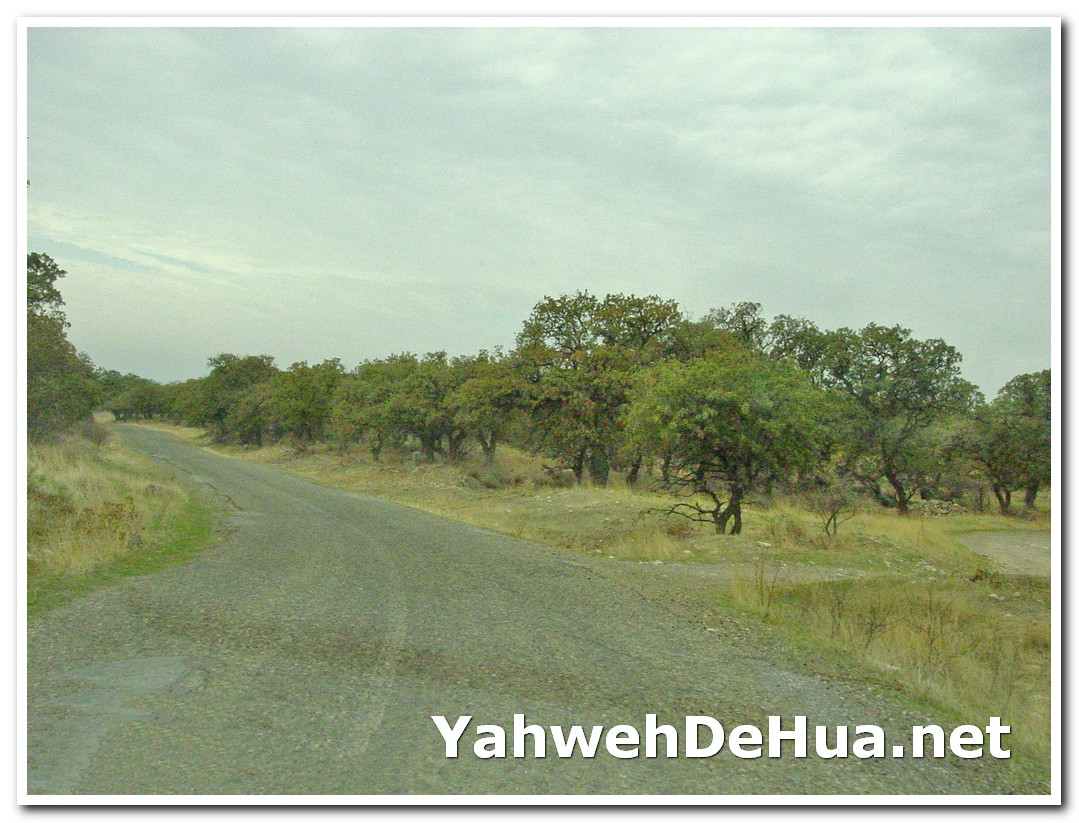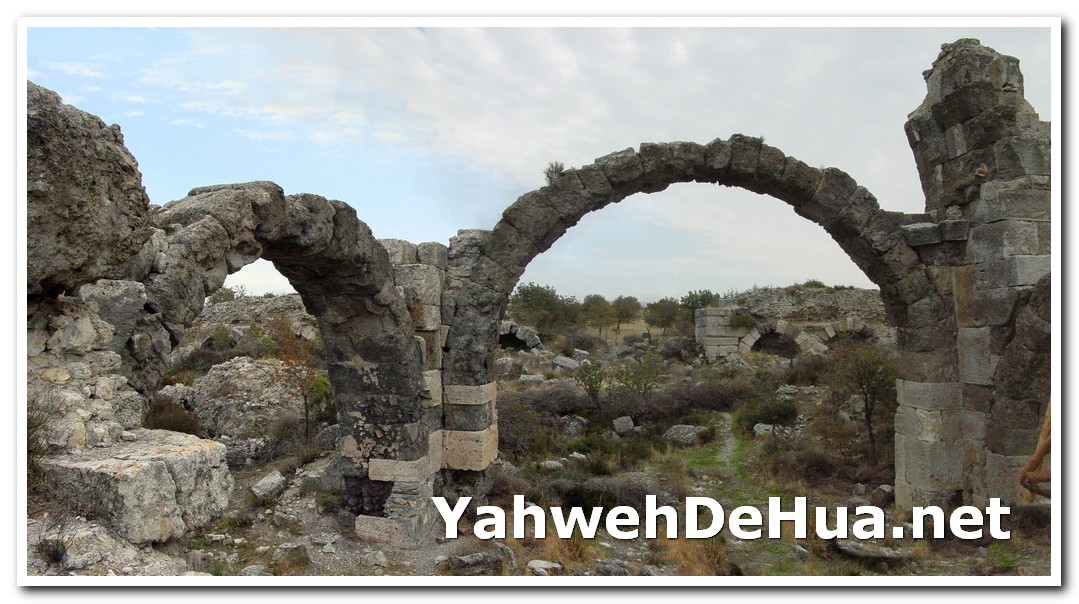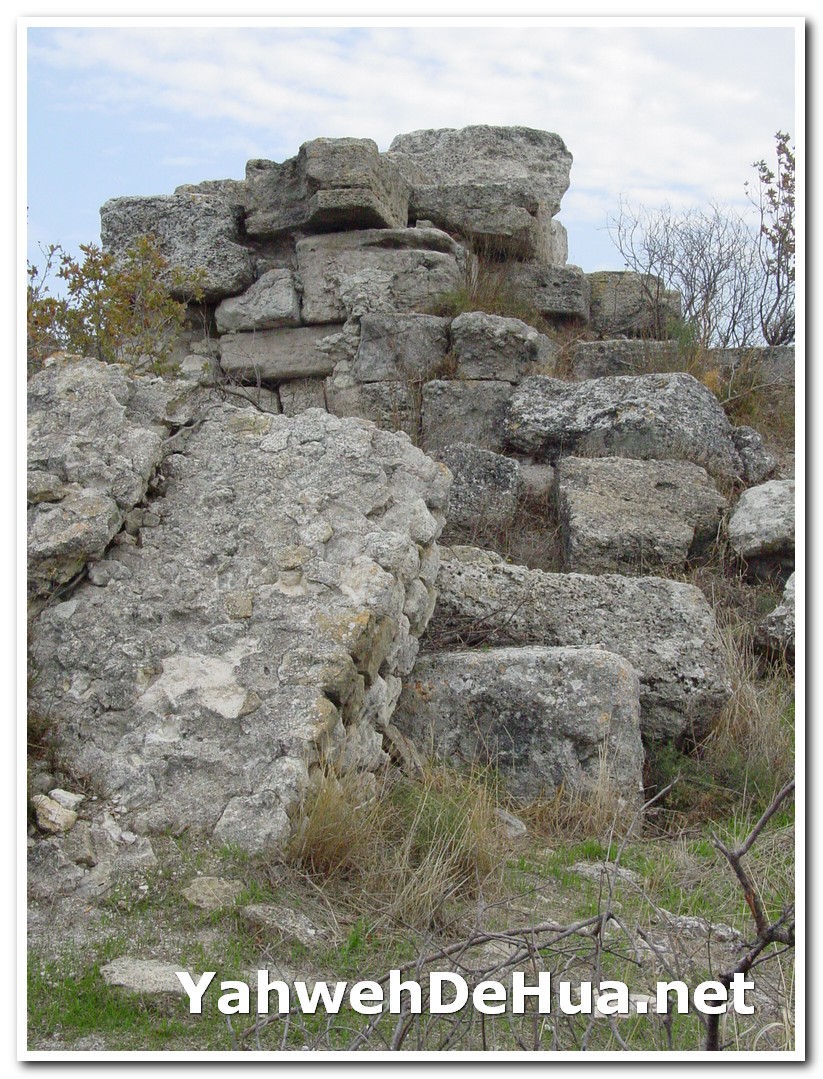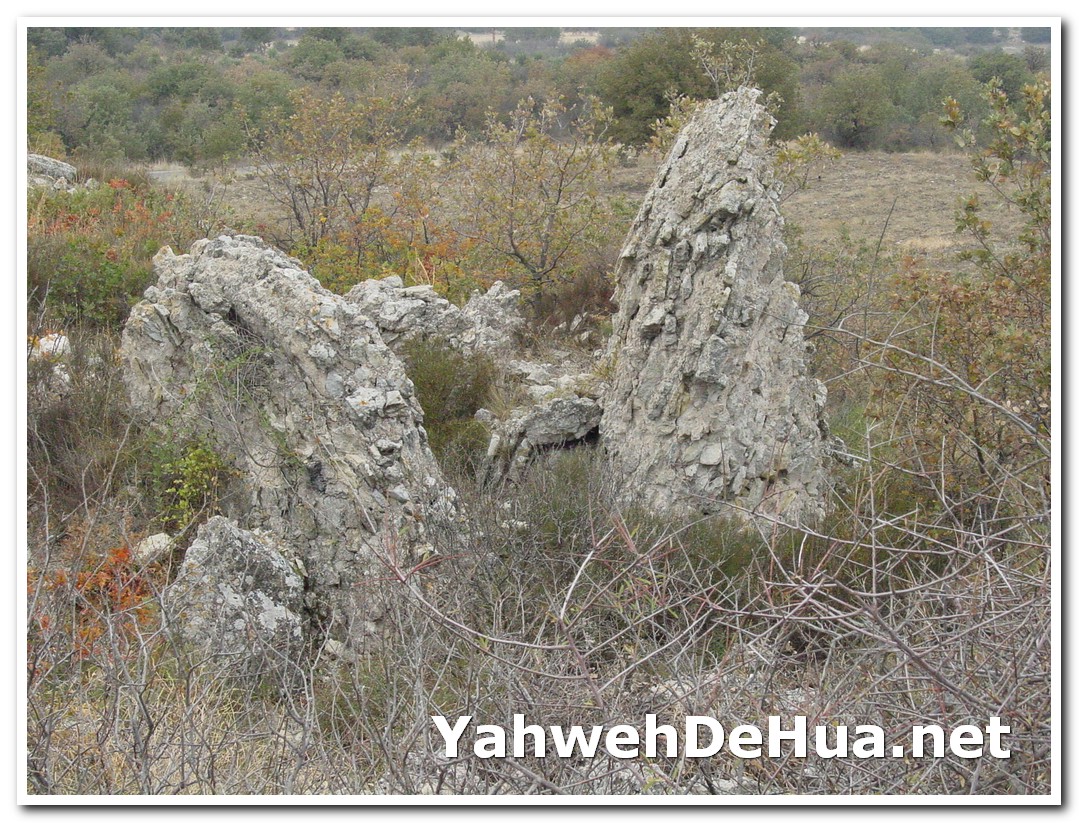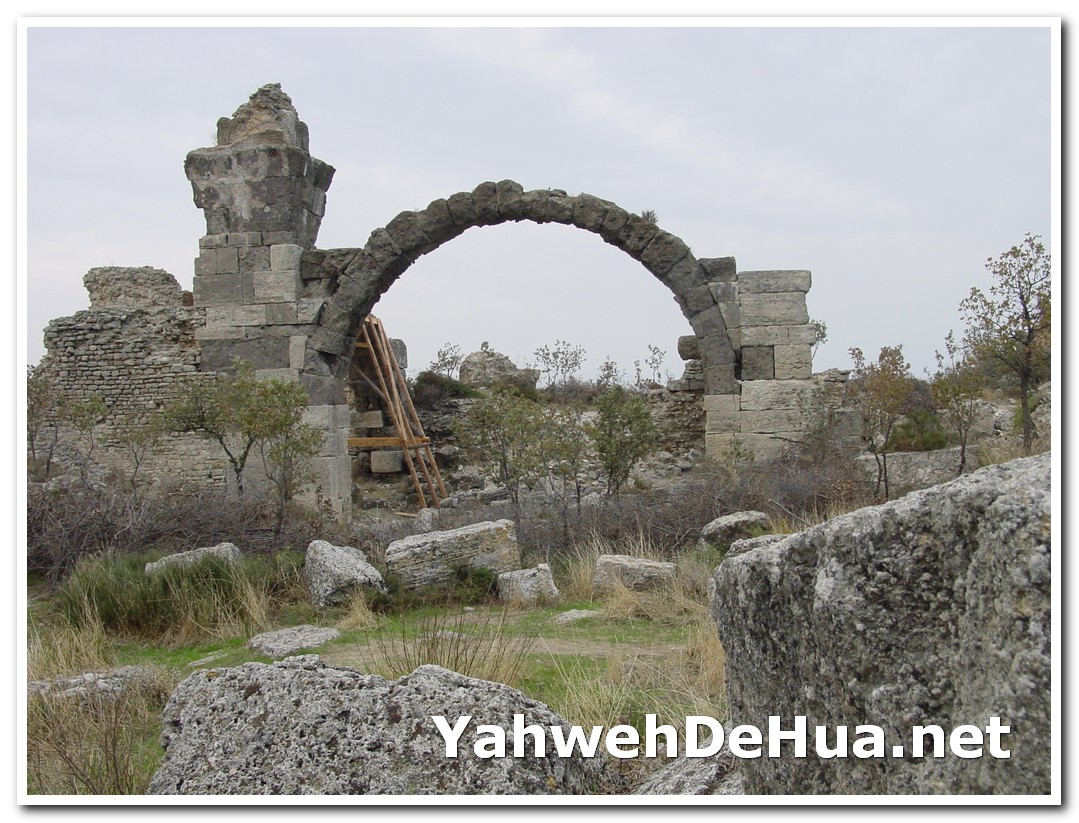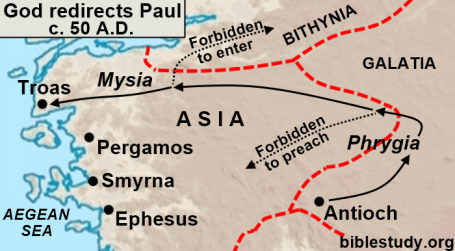There are some archaeological excavations done in another area across the road to the east. There are temple, a fountain, and an ancient forum. The excavation is still in the very early stage, perhaps in the future, more impressive finds can be discovered as Troas was the largest metropolitan in the area at its prime time.
圣经网: 读经,译经,查经,释经,解经,应用 All about the Bible: Reading, Translating, Studying, Interpreting, Expounding, and Applying the Bible
Friday, February 23, 2024
Wednesday, February 21, 2024
Photos #4: The Journey Between Alexandria Troas and Assos
From Alexandria Troas to Assos
We were there!!Finally arrived Troas after driving from Assos. There is no highway connecting between the two places, we have to go on to the smaller country roads.
But we went on ahead to the ship and put out to sea for Assos, intending to take Paul on board there. For having made arrangements in this way, he himself was intending to travel by land. (Acts 20:13)
Monday, February 19, 2024
Photos: Herodes Atticus Bath at Alexandria Troas #3
The Herodes Atticus Bath
The bath complex (approximately 84m by 123m in size) was built in 135 CE by Herodes Atticus who was a close friend of Emperor Hadrian. In 125 CE, Hadrian appointed him prefect of the free cities in the Roman province of Asia. Atticus also built many famous structures, among them were the Panathenaic Stadium in Athens and the Nymphaeum in Olympia.
This Bath cost some 3 million drachma. It was the largest of the period of the Roman Empire structures. For a long period until the 17th century, travelers mistook and visited it as the ancient city of Troy.
According to the head of the excavation team and Ankara University Archaeology Department member Associate Professor Erhan Öztepe, this significant structure in the ancient city largely collapsed to the present state in an earthquake in the winter of 1809-1810.
Water is delivered to the structure through aqueducts northeast of the bath. The bath should have a gymnasium next to it according to Roman customs.
Sunday, February 18, 2024
Pamphlet of Alexandria Troas
Visitor's Pamphlet
Map of the ancient city, showing the archaeological finds.
source ( ⬅click here to download)
There is a pamphlet of Alexandria Troas written by the Turkiye Ministry of Tourism in these last few years.
👩👨
Photos #2: Herodes Atticus Bath at Alexandria Troas
The Herodes Atticus Bath at Alexandria Troas
Saturday, February 17, 2024
#1 Who Do You Say That I Am? (New Series on Jesus the Messiah)
Who Do You Say that I am?
Towards the end of Jesus’ ministry, he asked two critical questions to his disciples while they were in the northern Judean region of Caesarea Philippi. This event marked the beginning of Jesus’ final journey to Jerusalem.
1) “Who do people say that the son of man is?” (Mt 16:13; cf. Mk 8:27; Lk 9:18))
2) “Who do you say that I am?” (Mt 16:15; Mk 8:29; Lk 18:20)
These are relevant questions as the context of Matthew 16 tells us that Jesus was warning the disciples of the leaven of the Pharisees and Sadducees. Apparently, there had been a lot of false teaching going on about Jesus already at that time. The same is true today in the 21st Century.
1) The first question Jesus asked is more of an information kind as to what the crowd is currently saying about Jesus. What is the popular opinion of Jesus? Notice that Jesus specifically uses the title “son of man” in phrasing his question.
2) The second question is more direct and distinctly personal. No titles are used here. The disciples need to come to terms on their own regarding the person of Jesus.
What answers would you give to Jesus if he were to ask you these two questions today?
1) To answer the first question, the popular opinion in Christian circles is that Jesus is God, the divine Savior. He is the begotten son of God who came to die on the cross for the sins of the world so that we can have eternal life. Jesus is the second member of the triune God, God the Son.
2) As for the second question (Who do you say that I am?), most Christians have never answered this question. Isn’t this strange? We have done a lot of Bible studies on how Peter answered this question, but that is Peter’s answer. Have you realized that you have never really answered this question yourself? Jesus’ question is directed to you. What is your answer to him?
Let’s look at the Gospel account to see how the disciples answered Jesus’ two questions:
1) Some say that Jesus is John the Baptist, others say Elijah, and others say Jeremiah or one of the prophets. (Mt 16:14)
2) Peter’s answer is: “You are the Christ, the Son of the living God.” (Mt 16:16)
Note that the public opinion of Jesus varies, whereas Peter’s confession of Jesus is true to the core as the revelation comes from the Father. (Mt 16:17)
In the backdrop of all the confusion and false teachings about Jesus, Peter’s proclamation is an important statement of faith – Jesus is the Christ, the Son of the living God. This event marks the turning point for Jesus, as from thereon, he starts foretelling his suffering, death and resurrection. This incident is recorded in all 3 Synoptic Gospels (Mt 16:13-20; Mk 8:27-30; Lk 9:18-20).
We have heard many sermons on this passage of Peter’s confession of faith. In my time, I have preached and led many Bible studies on this passage to different groups. There is an important application of this passage that all Christians need to face regarding their own faith: Who is Jesus?
What is your answer? Who is Jesus? This blog is going to be short because I want you to pause to answer Jesus’ question: “Who do you say that I am?” Is your answer going to be based on the popular opinion of the Nicene creed that Jesus is God, God the Son? Or is your answer going to be like that of Peter that Jesus is the Christ, the Son of the living God? If so, what does it mean to you that Jesus is the Christ, the Son of God?
You need to come up with your own conviction to examine where your faith is built upon. Most Christians build their faith on “an idea of Jesus” from what others tell them, or what the churches tell them, or even what the apostle Peter tells them. This is not good enough as all this is just head knowledge. You must come to have faith in Jesus as to who he is from a first-hand experience. You need to answer this question personally yourself with full conviction of who Jesus is to you. Do not quote others. What is the Father revealing to you regarding the identity of Jesus? Write to me and let me know your answer. [1]
In
graduate school, I took a few
courses on Christology as
I wanted to understand more about the person Jesus and his life. To my
surprise, I discovered that a lot of academic debates have been going on to
grapple with the
greatest puzzle of modern
Biblical scholarship – the question
of the “real Jesus.” Today, lots of historical
research is going on by
Catholic priests, scholars, historians, and theologians regarding the Jesus of Nazareth who lived in the 1st
Century era. Most evangelical churches remain
silent on this topic because of adherence to the Niceno-Constantinopolitan Creed that is deeply
rooted in their
Church constitutions. Any
pastor doubting the deity of Jesus will be
written off
as a heretic. For
this reason, I, too, fell into this trap in not wanting
to touch on this sensitive topic. Who
wants to sound like a skeptic in doubting the deity of Jesus?
While
this topic is silent in the churches,
there has still been an ever-growing maze of
literature on Jesus in the last twenty
years – more than ever before! As a result, the study of Jesus has gained an incredible amount of
attention in Biblical scholarship today, to the point that reading all of them
would take a lifetime. This
just shows how crucial this topic is so that people can come to grips with the true
identity of Jesus.
It is time for you to write your short thesis regarding Jesus’ question:
“Who do you say that I am?” You must seriously
examine and re-evaluate whether your faith in Jesus is founded in the Bible
alone. While we need to
keep abreast of the myriad research projects that have been done in current biblical
scholarship, we need
to come to our own conclusion in our quest to answer Jesus’ question: Who do
you say that I am?
Your answer to this question must come with deep conviction with revelation from God just as it did for Peter. Academic studies will give you information. Spiritual revelation comes from God and not from theology. “Who do you say that I am?” You need to answer Jesus. No one else can do it for you. When it comes to this central question, no substitutes will do.
More than 2000 years ago, Paul
warned about people who would come and preach “another Jesus” (2Cor 11:4). Evidently,
some in the apostle’s day had already, and so soon, fallen into the trap of the
enemy by believing “another Jesus.” If we so love Jesus, let us do some hard
work to examine whether our faith is in “this Jesus” that was preached by the
early apostles (Acts 1:11; 2:32; 4:11; 17:3).
Friday, February 16, 2024
Photos #1: Alexandria Troas 特罗亚图片 (1)
Troas Today
Today, Troas is in Western Turkey, in the Biga Peninsula along the Aegean Coast. It is not a developed place of attraction yet. There is some archaeological work, but the amount is minimal. It is near a small town Dalyan (pop. 5,800). A more famous ancient city Assos (now Behram), which Paul visited during the Third Missionary Journey, is 60 km away in the south, and the world-famous ancient Troy is about 40km away in the north which takes less than an hour's drive on the Mahmudiye road.
My wife and I visited Troas twice, in 2001 and 2017, not much has changed in the past 16 years.
The Biga Peninsula is largely a flat piece of rural land, with little population and villages.
Wednesday, February 7, 2024
Troas in New Testament 特罗亚
The word Troas (G5174) is used 6 times in the New Testament, 4 times in Acts (twice in Acts 16, twice in Acts 20), once in 2 Cor 2:12, once in 2 Tim 4:13).
Acts 16 is the account of the Second Missionary Journey.
2 Cor 2 could be the outward portion of the Third Journey after the riot in Ephesus (Act 19) and Paul went to Macedonia (Act 20:1), and upon the return leg of the same journey, by that time, we read that there was a congregation in Troas. Paul together with the team stayed in the city with the church (Acts 20:6-12).
It took them 5 days to sail from Philippi to Troas (Act 20:6).
In 2 Timothy, Paul's last epistle, Paul was in Rome, writing to Timothy who was in Ephesus. And Paul asked Timothy to come to visit him and to "bring the cloak that I left behind in Troas with Carpus, and the scrolls, especially the parchments" (2 Tim 4:13).
Again, it shows that Troas was at the crossroads from Asia to the west.
------
特罗亚这个名字(G5174)在新约圣经中使用了6 次,在使徒行传中使用了4 次(使徒行传16 章两次,使徒行传20 章两次),哥林多后书2 :12 一次,提摩太后书4:13 一次)。
使徒行传第 16 章记述了第二次宣教旅程。
林后2章可能是在以弗所骚乱之后(徒19),保罗前往马其顿(徒20:1)。之后第三次旅程的回程部分,那时我们读到在特罗亚已经有一个教会聚会点。保罗和他的团队一起留在城里的教会(徒20:6-12)。
他们花了五天时间从腓立比航行到特罗亚(徒 20:6)。
在保罗的最后一封书信《提摩太后书》中,保罗在罗马写信给以弗所的提摩太。保罗请提摩太来看他,"我在特罗亚留于加布的那件外衣,你来的时候可以带来,那些书也要带来,更要紧的是那些皮卷。"(提后4:13)。
这再次表明特罗亚处于从亚西亚到西方的十字路上。
👸👲
Monday, February 5, 2024
The "WE" passages in Acts 《使徒行传》中的"我们"
Many people are aware that in writing the accounts in Acts of the Apostles, the author started with the third-person stance, and some chapters further down, switched to a first-person plural "we".
The first instance happened here in Acts 16.
Paul had a vision at night of a Macedonian man, pleading for him "Come over to Macedonia and help us!" (Acts 16:9) The pleading "Come over" was in the singular tense.
Paul must have retold the vision to his companions, "when he had seen the vision, we wanted at once to go away to Macedonia, concluding that God had called us to proclaim the good news to them." (Acts 16:10)
This is the first time of the WE passages, including the author Luke in the mission team. This first-person record adds dynamics, life, and involvement to the description.
There is also an important lesson for us to learn, how the early disciples turned a single man's vision encounter into a team decision and action.
They must have been praying for divine direction of what to do next.
Then the vision came.
Then Paul told his experience.
The group concluded that this was a calling from God for the whole team.
This shows the oneness of heart and mind, putting aside all personal individual preferences.
Note also the word "immediately (at once)". This shows the urgency and readiness of the team.
All for one and one for all!
That's the way to go!
😎😍
-------
很多人都知道,《使徒行传》的作者在写作时,是从第三人称开始的,往后的一些章节,改用了第一人称复数「我们」。
第一个例子发生在使徒行传第 16 章。
保罗在夜间看到一个马其顿人的异象,为他恳求“请你过到马其顿来帮助我们!” (徒16:9)「请你过到」的恳求是用单数时态。
保罗一定向他的同伴复述了这个异象,“保罗既看见这异象,我们随即想要往马其顿去,以为神召我们传福音给那里的人听。” (徒 16:10)
这是第一次用"WE我们",包括作者路加在传道团队中。这是以第一人称记录,为描述增添了动态、生命力和参与度。
我们还需要学习一个重要的教训,早期的门徒如何将一个人的异象遭遇,转变为团队的决策和行动。
他们一定一直在祈祷下一步该做什么的神圣指示。
然后异像来了。
然后保罗讲述了他的经历。
小组的结论是,这是神对整个团队的呼召。
这显示心灵和思想的合一,抛开所有个人的个人喜好意见。专注在从神而来的使命上。
另请注意“随即(立刻)”一词。这显示了团队的紧迫性和准备状态。
人人为我,我为人人!
这是要踏上征途!
NEW! NEW! Sunday Gospel Channel on You-Tube
Our SUNDAY GOSPEL CHANNEL is now officially launched. Exciting News. By the grace of God, we are launching a Sunday Gospel Channel on you-...

-
Neapolis, the ancient port where Paul first came to European soil, is now called Kavala. 尼亚波利(Neapolis)是保罗首次踏上欧洲土地的古老港口,现称为卡瓦拉(Kavala)。 By...
-
Our SUNDAY GOSPEL CHANNEL is now officially launched. Exciting News. By the grace of God, we are launching a Sunday Gospel Channel on you-...
-
The seaport Neapolis Neapolis means the New City in Greek, today the city is called Kavala. The city in Roman times was situated on the an...
















